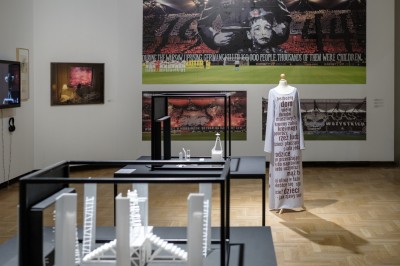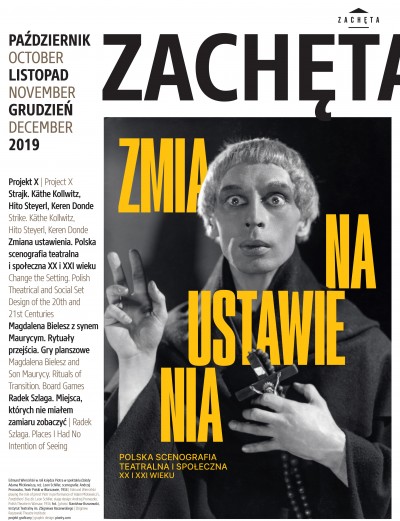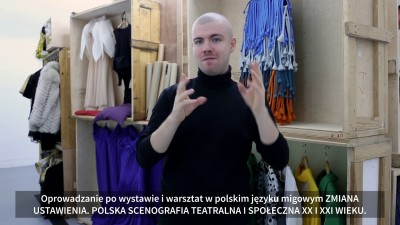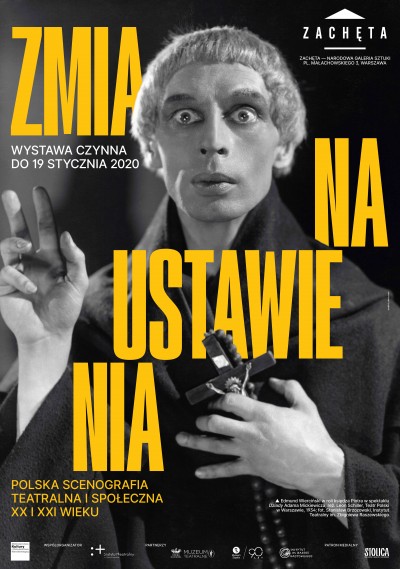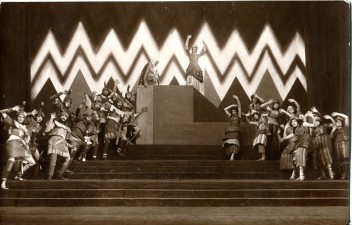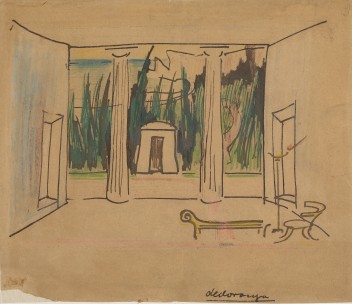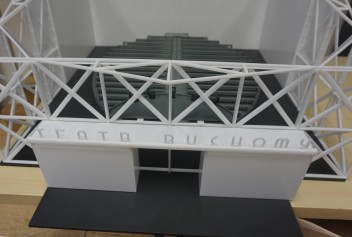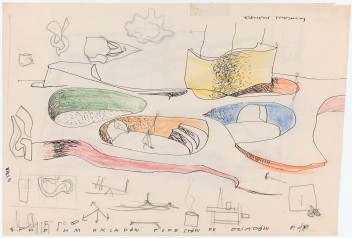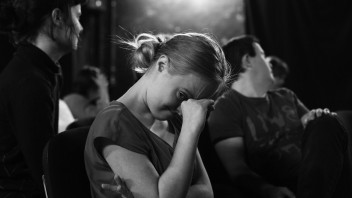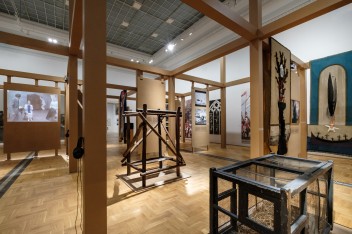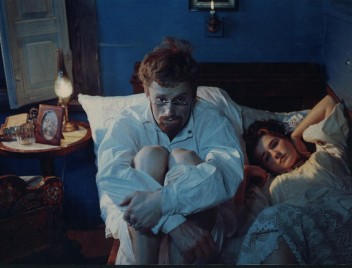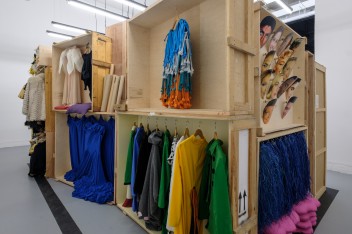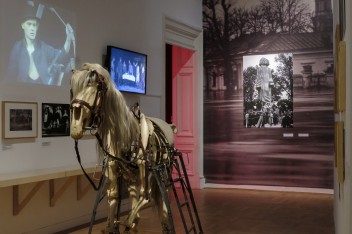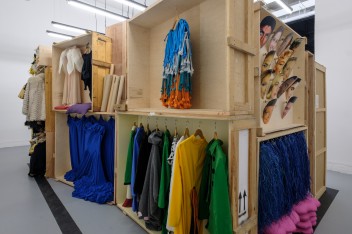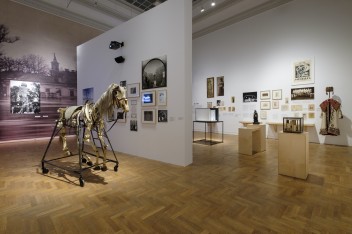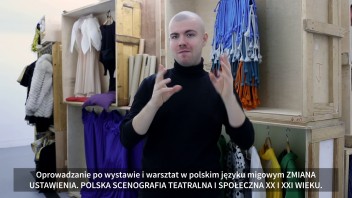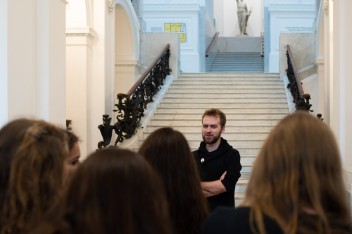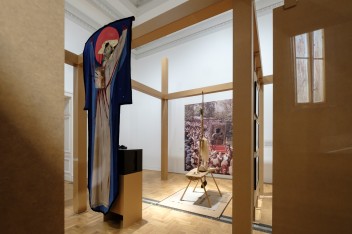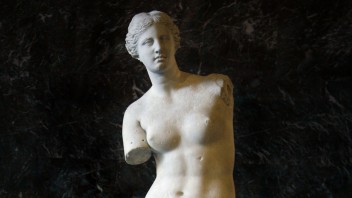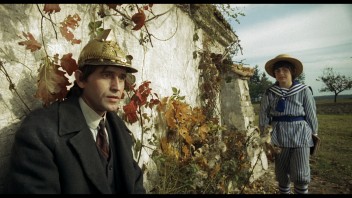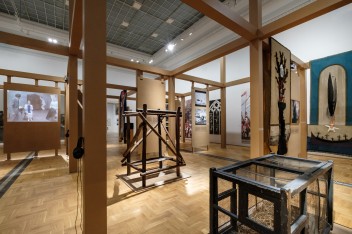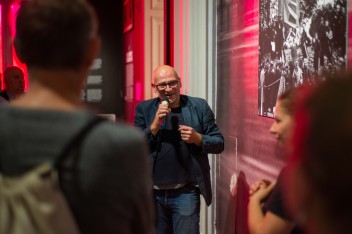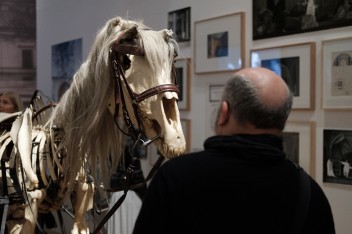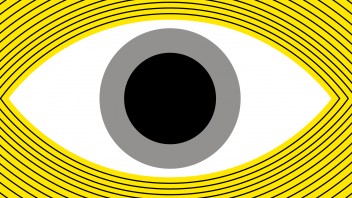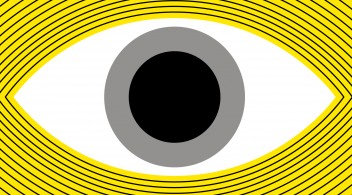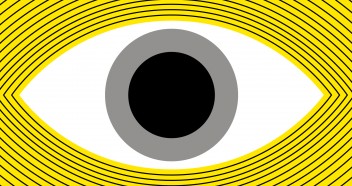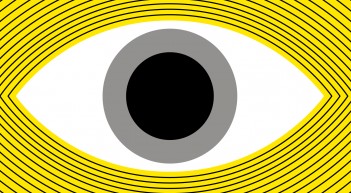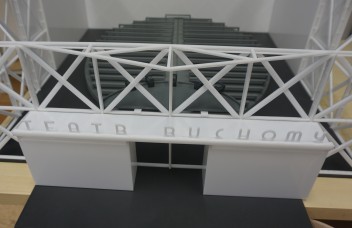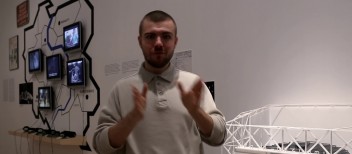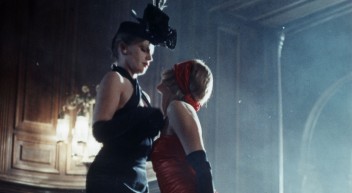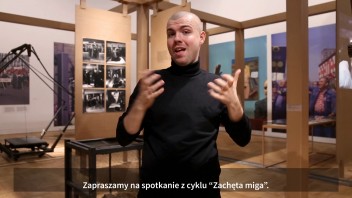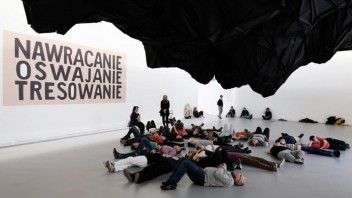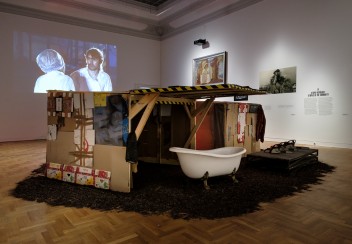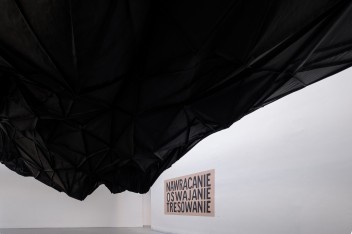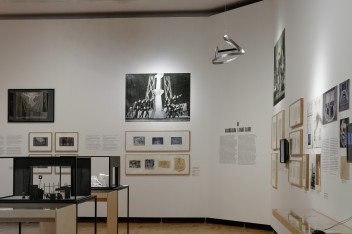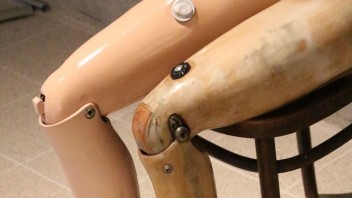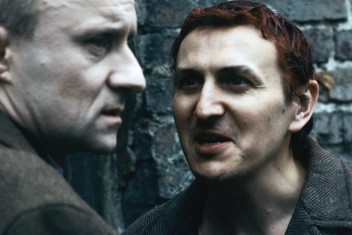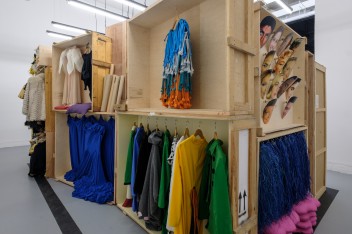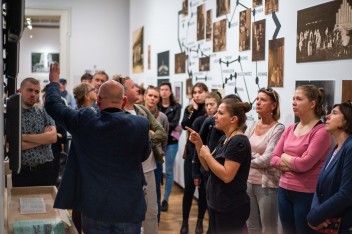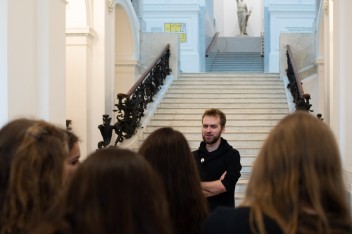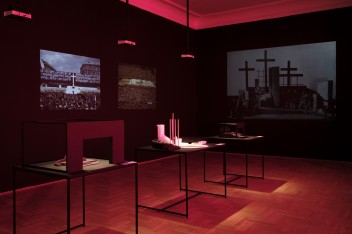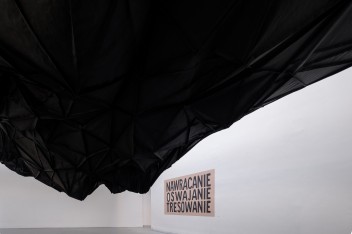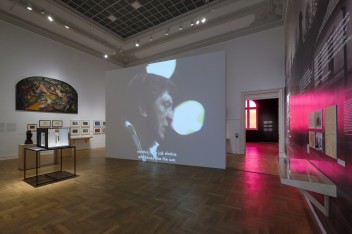Change the Setting Polish Theatrical and Social Set Design of the 20th and 21st Centuries
19.10.2019 – 19.01.2020 Change the Setting Polish Theatrical and Social Set Design of the 20th and 21st Centuries
Zachęta – National Gallery of Art
co-organiser: Zbigniew Raszewski Theatre Institute in Warsaw
partners: Muzeum Śląskie in Katowice; Theatre Museum, Teatr Wielki— Polish National Opera; The Grotowski Institute
film partner: National Film Archive — Audiovisual Institute
curator: Robert Rumas
academic collaboration: Dorota Buchwald, Prof. Dariusz Kosiński, Dr hab. Daniel Przastek
collaboration on the part of Zachęta: Julia Leopold and Michał Jachuła, Ewa Mielczarek, Aleksandra Zientecka
collaboration on the part of the Faculty of Political Sciences and International Studies of the University of Warsaw: Paweł Mrowiński
research and editing of film materials: Michał Januszaniec
exhibition arrangement: Robert Rumas
mock-ups: Eugeniusz Geppert Academy of Art and Design Wrocław
visual identity: Jakub Jezierski
accompanying programme: Zofia Dubowska, Karolina Iwańczyk, Marta Miś
exhibition production: Anna Muszyńska, Krystyna Sielska and Andrzej Bialik, Dariusz Bochenek, Remigiusz Olszewski, Grzegorz Ostromecki, Paweł Ostromecki
Change the Setting. Polish Theatrical and Social Set Design of the 20th and 21st Centuries is the fourth review exhibition devoted to theatrical set design in the history of Zachęta. Its concept was born out of the original vision of Robert Rumas, a respected visual artist and set designer. The curator and his team of collaborators lead the viewers through 100 years of history, building the narrative of the exhibition according to an issue and theme-based layout and creating contextual references to earlier and later phenomena.
The exhibition shows the most important set design phenomena shaping the space and aesthetics of theatre performances and political and social events in Poland in a new light. The large cross-sectional show is an innovative attempt at a comprehensive presentation of the process of evolution of set design: from the first reform of the theatre to contemporary times, taking into account the problems, phenomena, and resulting repercussions inherent in understanding the role of this field in the histories of Polish theatre and culture.
Theatre is a sensitive instrument for registering changes in the socio-cultural order, and its set design is also a tool for theatricalising the public space — the background and arena of events and history in progress. Set design as a medium that shapes the space, although it is ephemeral, has a powerful function and a large reach. It usually resounds loudly in the public domain, in media discourse; it remains in the audience’s memory and its examples are recorded in history. Regardless of whether it is subtly subliminal or propaganda, it is a designed work for social rituals and worldview disputes inscribed in reality. Thus, the exhibition shows the importance, functions and social roles served by the set design in the artistic space and in non-artistic reality, treating them as a common area of functioning of groups and individuals in the broadly understood culture that generates disputes, conflicts and controversies.
The concept of social set design hides within it the designing of spaces for events with a large reach and resonance among the ‘audience’, according to a scenario prepared in accordance with the circumstances — those playing out in squares, streets, public buildings or in the open air. For this reason, the exhibition creators’ interests include funeral ceremonies, papal pilgrimages, patriotic, propaganda and sport events, as well as protests. The social dimension of set design and the associated political aspect of events directed both by the state authorities and as a grass-roots initiative, by citizens and audiences of the public stage, has been shown for the first time alongside the history of Polish theatrical set design, which cannot be separated from the political contexts in which the individual projects were created.
Although the authors intent is not an academic approach to the subject or a linear presentation of the history of Polish set design, including the transformations of theatrical art, the exhibition encompasses key themes inscribed in the history of the theatre and issues faced by contemporary theatre in the broad context of current cultural, political and social phenomena.
The selection of materials presented in the exhibition is also the result of Zachęta’s collaboration with the Zbigniew Raszewski Theatre Institute, which led the research project entitled Change the Setting. Polish Theatrical and Social Set Design of the 20th and 21st centuries, carried out thanks to a grant from the National Programme for the Development of Humanities of the Ministry of Science and Higher Education. The Theatre Institute will publish the results of this research in mid-2020.
photo: Edmund Wierciński playing the role of priest Piotr in performance of Adam Mickiewicz’s, Forefathers’ Eve, dir. Leon Schiller, Polish Theatre in Warsaw; 1934, photo: Stanisław Brzozowski, Zbigniew Raszewski Theatre Institute
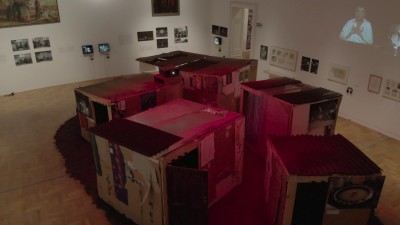
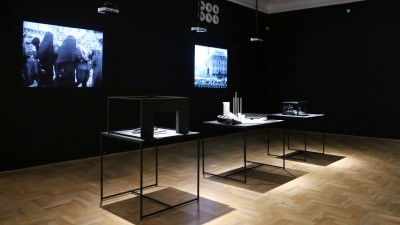
Change the Setting
Polish Theatrical and Social Set Design of the 20th and 21st Centuries
19.10.2019 – 19.01.2020
Zachęta – National Gallery of Art
pl. Małachowskiego 3, 00-916 Warsaw
See on the map
Godziny otwarcia:
Tuesday – Sunday 12–8 p.m.
Thursday – free entry
ticket office is open until 7.30 p.m.

